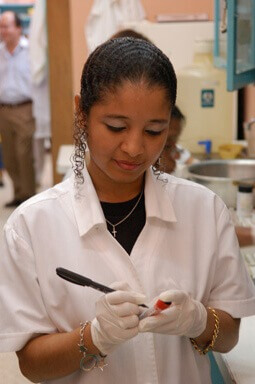Anupama DathanONE
Anupama Dathan is a health research assistant at ONE, a global movement campaigning to end extreme poverty and preventable disease by 2030.
In this guest post, Anupama Dathan—health research assistant for ONE—writes about a new report that examines global commitments to ending the AIDS pandemic.
With world leaders calling for ambitious goals like an AIDS-free generation and achieving the beginning of the end of AIDS, ONE and many of its partners in the scientific and advocacy communities have been working to define this vision. Also known as the AIDS tipping point, the beginning of the end of AIDS occurs when the number of people newly added to treatment in any given year is equal to or exceeds the number of people newly infected with HIV. To track global progress towards this point, ONE recently released a new report, called The Beginning of the End? Tracking Global Commitments on AIDS. This new report is the second in a series of annual AIDS accountability reports.
The good news in the report is that the world is making steady progress. 1.6 million people around the world received AIDS treatment for the first time in 2012, compared with 2.3 million people who were newly infected. At first glance, this is a vast improvement from just a decade ago, when the epidemic was raging out of control, as more than 3 million people were newly infected per year and almost no one was added to treatment.

And though it is a vast improvement, a closer look also reveals it is very one-sided. Despite a reduction in the number of new HIV infections, most of the progress stems from an annual accelerations in the number of people newly accessing treatment each year. Truly ending the AIDS epidemic will be next to impossible without also dramatically reducing new HIV infections, a feat that requires renewed attention to HIV prevention measures. This is why ONE is calling for increased funding and support for HIV research and development (R&D).
AIDS treatment mechanisms, such as antiretroviral drugs (ARVs), came into existence thanks to focused, well-funded research. This same focus must now be paid to HIV prevention. Unfortunately, we are headed in the opposite direction. Instead of well-funded research, we’re seeing a steady decline in HIV R&D funding, something that has hindered the development of new prevention tools that could combat HIV even more effectively. A few promising trials of tools and products are in progress, but funding needs to be scaled up appropriately to support research on new, diverse interventions. Innovations like an HIV preventive vaccine have yet to be found.
Arguments can be made that the focus should be on improving access to existing prevention mechanisms—pre-exposure prophylaxis, male and female condoms, prevention of mother-to-child transmission, to name a few. While this is a valid point, existing mechanisms are only part of the solution. A recent study estimated that depending on its characteristics and level of coverage, an AIDS vaccine could reduce the number of new infections by five to 10 million between 2020 and 2030 while also saving between $46 billion to $95 billion in averted costs of ARV provision. More research is also needed to test recently discovered prevention mechanisms, including the use of treatment-as-prevention.
It’s encouraging to see the progress the world is making towards the beginning of the end of AIDS, but we need to remember that treatment alone isn’t enough. More research into effective ways to prevent AIDS is urgently needed, which is why ONE calls for increased R&D funding in this latest report. Without it, the path to the end of AIDS will be longer, more expensive, and, most of all, will cost many millions more lives.